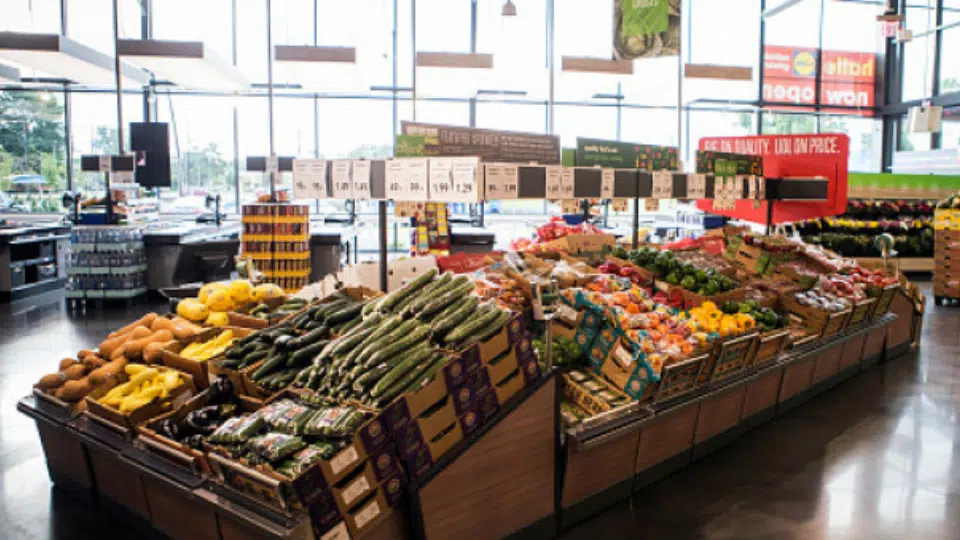
2023 is proving to be a pivotal year for the food industry. In this article we explore the top 3 pain points and 5 key trends grocers are facing.
According to FoodIndustry.com, the U.S. food market is worth $1.5 trillion annually, or roughly 4 percent of the domestic gross product. $800 billion of that revenue is from supermarkets and food stores. Compare this to the U.S. apparel market, which is estimated to be worth $318 billion (Statistica). And while the retail industry often focuses on fashion as the driver of trends, grocers are fast emerging as the center of consumers’ mindsets. What changed?
During the pandemic consumers reverted to a prioritization of need-based consumption. Shutdowns, work-from-home and supply chain-triggered scarcities shifted purchase patterns and forced a fast transformation across all retail sectors. Traditional stores had to implement buy online, pick up in-store (BOPIS) services, low contact transactions, and account for record-high demand for website engagement. Grocers, which once needed to mainly address product selection, freshness and promotion, now had to provide safe, clean, contactless shopping and home delivery options.
Fast-forward to post-pandemic and we see the food consumer continuing some of their acquired behaviors like food-at-home options, digital services and on-demand delivery. These, in addition to new requirements of value, convenience and quality, have brought light to the need for grocers to continue to transform their operations and customer experiences. Unlike their brand counterparts in fashion, however, grocers operate on low single-digit profit margins and deal with perishable goods that require more precise supply chain and inventory management.
Given the complexity of the food industry, it’s hard to identify just three pain points that the industry is facing, but there is commonality among grocers which state that in-stock levels, shrink and brand differentiation are topping their list.
In-stock levels are critical to profitability. With only a relatively small percentage of products producing most of the sales (e.g., milk, bread, butter, etc.), focusing on what products need to be on the shelf at all times, and at the optimal price point, are the cornerstones for success. This means that grocers need to improve operational efficiency, reduce shrink throughout their operation, all while meeting customer expectations in the dynamic grocery retail space to improve profitability.
Mix in the more current need to differentiate themselves from emerging new options, and grocers are looking at a new level of investments to transform their brands to scale and achieve long-term viability and profitability. While the likes of Target and Walmart can blend their margins to compensate for food departments (Target does $20 billion in food annually, but food is only 20 percent of its merchandise mix), single-purpose supermarkets need to be surgical in their investments with little room for error. This leads to the conversation around the top trends driving the industry, with inflation and price volatility squeezing margins even further and topping the list which includes:
- Inflation
- Digital enablement
- Prepared meals
- Health and sustainability
- Competitive positioning/customer experience
Let’s start with inflation, aka, the price of milk and eggs. Seventy-five percent of consumers believe that the U.S. economy will continue to be challenged throughout 2023. This is driving a mindset of caution and value sensitivity. Grocers are re-evaluating their legacy systems to look for efficiencies to compensate for margin pressures. Analytics, inventory management, turn management and pricing optimization are critical pieces to a more systematic approach to running a grocery business. In turn, expense reduction and overall margin enhancement is the flip side of this model. Grocers need to prioritize private-label offerings as they can fill the value void for shoppers and protect margin percentages. Kirkland products has a best-in-class practice of offering good, better, best brand alternatives that allow for higher penetrations of private label at more profitable rates and, often, with better quality selections.
The food industry hasn’t been immune to digitization and consumer shopping patterns/behaviors. The pandemic forced fast acceleration in the digital world for grocers that mastered the in-store experience (think bakeries, flower and wine boutiques, seasonal endcaps, high-margin/CPG paid shelf placements, specialty stations, smart signage, shelf pricing and even self-checkouts), but were quite behind with e-commerce and mobile applications (which are up 12 percent year-over-year).
In addition to online shopping trends, grocers are managing the post-pandemic continuation of food at home/delivery (FOH), which is up 8.7 percent YOY. Consumers have now grown accustomed to having their groceries brought right to their doorsteps (the milkman is back). However, home delivery is expensive and is chipping away at the low single-digit profit margins being strained on all sides. Costs, coupled with labor, speed requirements and scheduling preferences, add even more operational complexity and revenue strain. Home delivery may be here to stay, but the food industry needs a better solution to accommodate shoppers. Drones? Driverless vehicles? Third-party apps? Regional pick-up stations? More to come.
Another trend not helping with rising costs is the desire for healthier food options and increasing requirements around sustainability. According to Precedence Research, the organic food market is predicted to have a CAGR growth rate of 12 percent over the next eight years and has already experienced double-digit YOY growth. Local growers, more regionalized supply chains, fresher food options, and low/no preservative selections add additional pressures to speed to shelf and product turn rates. Managing national suppliers is one level of operations, but farm-to-table/shelf management is more granular and less scalable (aka, more expensive). Layer on sustainability pressures with carbon footprint reductions, fair practice farming, partner scrutiny and packaging requirements, and grocers have even more on their plates (pun totally intended).
Yet another trend dominating the food industry is the growth of prepared foods and meal kits. Fortune Business Insights states that prepared meals have grown by 6 percent and are equal to $147 billion in sales in the U.S. alone (2021). With continued time pressures and the availability of affordable convenience, home cooks are looking for more options and alternatives in this segment beyond the Costco $5 cooked chickens. What was triggered by dual-income household time constraints and latch-key kids has now become a new requirement even among the work-at-home segments.
However, if grocers have been challenged with getting fresh food at a competitive price delivered to consumers, how can they compete in getting freshly prepared, hot/reheat meals to these same customers and still make a profit? Again, the in-store experience for prepared meals was a collective win for supermarkets and shoppers as they expanded their salad bars, food-to-go stations, and prepared and catered department sections — as long as the customers came to them, it was easier to manage. Now, grocers have to marry online shopping, in-store fulfillment, digital ordering and scheduling, and at-home delivery to the mix. This void in the market has allowed for new competitors to surface like Daily Harvest, Home Chef, Hello Fresh, Hungry Root, Sprinly, among others.
Topping off the top trends then, is competition, differentiation and branding. Local grocers used to have almost proprietary marketplaces defined by distance to and from the communities they served. National brands (Kroger, Wegmans) and international players (Lidl, Aldi), however, are infiltrating local markets as are the curated/specialty regional brands like Trader Joe’s and Sprouts. Add bulk retailers like Costco and hybrid retailers like Walmart/Target and the entire tech-enabled segment like Amazon.com (Whole Foods) and home meal delivery (see above), and supermarkets are even more in need of differentiation.
Grocers need to identify which lane they’re playing and competing in to create the right customer experiences and meet consumer expectations and demand. Are they value-low service? Curated, higher priced-higher service? Large selection or boutique? Many supermarkets never had to think about personality or branding before, but pioneers like Trader Joe’s, known for its Hawaiian shirts, humorous marketing, and private label and higher-end brands, and Whole Foods, known for fresh, healthy, aspirational products are redefining the space.
Therefore, still only thinking about the cost of eggs? Doubtful. While the food industry has many challenges ahead, it also has enormous opportunities and innovations on the horizon as well. The positive news is that food is a necessary purchase and is practically the one universal industry that caters to 100 percent of the global market. With the help of skilled experts who can assess and assist in driving transformation and the continued emergence of new technologies, including cloud-based AI/ML and the metaverse, this industry is an exciting sector to watch.
* Republished with permission from TotalRetail.

